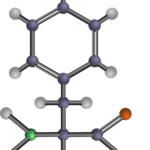Polymers are versatile materials with widespread applications, from packaging to electronics to medical devices. Their unique properties, such as flexibility, durability, and ease of processing, make them integral to modern life. However, not all polymers behave the same way when subjected to heat. Some polymers decompose before they melt, which is an interesting and important phenomenon that influences their use in various applications.
In this article, we will explore the tendency of certain polymers to decompose before melting, the reasons behind this behavior, and the implications it has for their practical use.
Understanding the Thermal Behavior of Polymers
To understand why some polymers decompose before melting, it is essential to grasp the basic concepts of polymer thermal behavior. The thermal properties of a polymer are largely dictated by its molecular structure and the type of chemical bonds within its polymer chains.
When heat is applied to a polymer, its molecules begin to move more vigorously, causing the polymer to soften. This process can occur in two main ways:
Melting: In crystalline polymers, the heat causes the ordered structure of the polymer chains to break down, allowing the polymer to transition from a solid to a liquid state. This occurs at a specific temperature known as the melting point.
Decomposition: In some polymers, the heat may cause the chemical bonds between the atoms in the polymer chains to break, leading to a chemical reaction that breaks the polymer into smaller fragments or monomers. This process is called decomposition and typically results in the loss of the polymer’s original properties.
Some polymers experience decomposition at temperatures lower than their melting points, which is primarily due to their molecular structure, the strength of their bonds, and their chemical stability under heat.
Factors Leading to Decomposition Before Melting
The tendency of certain polymers to decompose before melting can be attributed to several key factors:
Molecular Structure: Polymers with rigid, highly cross-linked structures or those that contain strong covalent bonds (such as aromatic rings) may resist melting. However, these structures are more prone to undergoing thermal degradation when exposed to heat.
Weak Bonds: Polymers that contain weak bonds, such as ester linkages or hydrogen bonds, can be more susceptible to breaking under heat. This leads to the breakdown of the polymer chains before they can transition into a molten state.
Thermal Stability: Some polymers have inherent instability at high temperatures. This instability can arise from a variety of chemical groups in the polymer backbone that may decompose when exposed to heat.
Rate of Decomposition: The rate at which a polymer decomposes also depends on its exposure to oxygen and other environmental factors. In an oxygen-rich environment, polymers may degrade more rapidly due to oxidation reactions.
Processing Conditions: The decomposition temperature can also depend on the conditions under which the polymer is processed. Polymers exposed to high temperatures in the presence of moisture or other environmental factors can begin to degrade before they reach their melting point.
Polymers That Decompose Before Melting
Several polymers exhibit the tendency to decompose before they melt. Let’s look at some of these polymers in greater detail:
1. Polyimide (PI)
Polyimides are a group of high-performance polymers known for their excellent thermal stability and mechanical properties. They are commonly used in aerospace, electronics, and high-temperature applications. However, polyimides have a tendency to decompose before they melt, making them distinct from many other types of polymers.
The reason for this behavior lies in the structure of polyimides. These polymers have an aromatic backbone with strong covalent bonds, including imide linkages, which provide them with excellent heat resistance. However, this rigidity and the strength of the chemical bonds make polyimides less likely to melt in a conventional manner. Instead, when exposed to high temperatures, polyimides will often undergo thermal decomposition before reaching their melting point, which can be as high as 400°C.
Polyimides are typically used in applications where high-temperature stability is critical, such as in insulating materials for electrical components, aerospace parts, and even in semiconductor technology. Their decomposition behavior is a consideration when processing them, as they require special handling to avoid degradation.
2. Polycarbonate (PC)
Polycarbonate is another widely used thermoplastic polymer that tends to decompose before melting. Polycarbonate is known for its high impact resistance and optical clarity, which makes it an excellent choice for applications such as eyewear lenses, optical discs, and safety equipment.
Polycarbonate has a relatively high melting point, typically around 300°C. However, it begins to decompose at temperatures as low as 270°C. The decomposition of polycarbonate is typically a result of the breakdown of the carbonate ester linkages in its polymer backbone. This decomposition can release carbon dioxide and other gases, which contribute to the polymer’s degradation.
Because of its tendency to decompose before melting, polycarbonate must be carefully processed, especially during injection molding or extrusion, to avoid compromising its structural integrity. When working with polycarbonate at elevated temperatures, processors must consider its thermal stability to ensure the material retains its desired properties.
3. Polylactic Acid (PLA)
Polylactic acid (PLA) is a biodegradable polymer derived from renewable resources such as corn starch or sugarcane. PLA has gained popularity due to its environmental benefits and its use in applications such as biodegradable packaging and 3D printing.
PLA tends to decompose at relatively low temperatures, often well before it reaches its melting point. This is due to the nature of its molecular structure, which includes ester linkages that are relatively weak and prone to hydrolysis and thermal degradation. PLA begins to break down at temperatures around 200°C to 220°C, which is significantly lower than its melting point of approximately 220°C to 230°C.
The tendency of PLA to decompose before melting limits its use in high-temperature applications. However, its ability to break down into harmless byproducts in the presence of heat makes it an excellent choice for environmentally friendly products that are designed to degrade over time.
4. Polyethylene Terephthalate (PET)
Polyethylene terephthalate (PET) is one of the most commonly used polymers in the world, primarily for making plastic bottles, containers, and fibers. PET is a semi-crystalline polymer with a relatively high melting point (around 260°C to 270°C). However, it can begin to decompose at temperatures around 250°C, which is lower than its melting point.
The decomposition of PET occurs due to the breakdown of the ester linkages in its polymer backbone. This leads to the release of various byproducts, including acids and alcohols, which can affect the material’s properties. As with polycarbonate, the tendency of PET to decompose before melting requires careful temperature control during processing to avoid degradation.
PET’s decomposition behavior is one of the factors that must be taken into account during recycling processes, as high temperatures are often used to melt the material for reuse. If PET is overheated, it may decompose rather than melt, leading to the loss of valuable material.
Implications of Decomposition Before Melting
The tendency of certain polymers to decompose before melting has important implications for their use in various industries. For example:
Processing Challenges: When a polymer decomposes before melting, it can present challenges during manufacturing processes like extrusion or injection molding. These processes often require precise temperature control to ensure that the polymer melts uniformly and does not degrade prematurely.
Material Selection: The thermal stability of a polymer is an important factor to consider when selecting materials for high-temperature applications. Polymers that decompose before melting are generally unsuitable for use in environments where high temperatures are sustained for extended periods.
Recycling Considerations: The decomposition of polymers before melting can also impact recycling processes. In some cases, polymers that degrade at lower temperatures may not be suitable for conventional melting and remolding techniques, necessitating alternative recycling methods.
Performance in End-Use Applications: In certain cases, the decomposition of polymers can be a desired feature. For example, in the case of PLA, the polymer is designed to decompose under environmental conditions, making it ideal for single-use applications where biodegradability is a key consideration.
Conclusion
In summary, some polymers have the tendency to decompose before they melt due to their molecular structure, weak bonds, and thermal instability. Polymers such as polyimide, polycarbonate, polylactic acid, and polyethylene terephthalate all exhibit this behavior, which must be carefully considered during manufacturing, processing, and recycling. While decomposition before melting can limit the practical use of certain polymers in high-temperature applications, it also opens the door for specific applications that require biodegradability or high thermal resistance. Understanding the thermal behavior of polymers is crucial for selecting the right material for a given application and ensuring its long-term performance.















